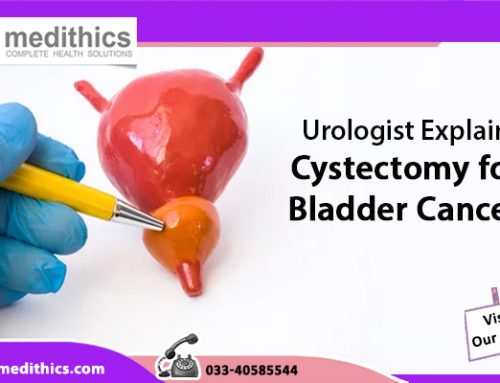Endopyelotomy procedure helps a urologist to treat the obstructions in ureteropelvic junction. When urine collects in the funnel-part of the kidney and refuses to smoothly pass out through connected tubes to the bladder, it gives rises to uneasiness and discomfort. The ideal candidates for Endopyelotomy are those suffering from defects of the kidneys, fibrous scarring inside the kidney walls, etc.
Overview
Endopyelotomy is used for the treatment of ureteropelvic junction obstruction (UPJ). It is a condition described by the narrowing of the lower part of the kidney that connects to the bladder with tubes called ureters.
Although, the exact cause of blockage in the funnel-shaped part of the kidney is not yet known, but certain reasons like other surgical interventions (renal stone disease), or obstructive lesions can cause the problem. Other causes for ureteropelvic junction obstruction include abnormalities like fibrous scarring, horseshoe kidney, and any interruption in blood vessels.
UPJ obstruction is a common symptom that arises in babies while in their mother’s wombs. The blockage causes thinning of the area between the lower parts of the kidney to the ureter, thus damaging the kidney due to urine build up.
The signs and symptoms of ureteropelvic junction obstruction are blood in the urine, back pain, poor growth in infants, kidney infection, lump in the abdomen, vomiting, urinary tract infection, etc. In some patients, the indications are stronger that could badly affect the normal functioning of the kidney. The major reason is growth of abnormal vessels above the ureter in babies, while reasons like scarring tissues, kidney stones and infections are the cause of UPJs in adults.
Diagnosis of ureteropelvic junction obstruction is done with several tests and physical examinations. An ultrasound carried out during pregnancy helps detect the problem in babies before they are born. Other tests like creatinine clearance, a CT scan, IVP, CT urogram (scanning of ureters and kidneys with IV comtrast), nuclear scan of kidneys suggest whether you have kidney problems or not. A procedure called Endopyelotomy is regarded one of the best treatment options for a UPJ condition. Before an Endopyelotomy surgery, you need to take certain preparations.
Ideal candidates for Endopyelotomy are babies and adults who suffer from birth defects of the kidney, fibrous scarring, or abnormal blood vessel growth in the lower part of the kidney to the urether.
Before the treatment
- Before Endopyeletomy treatment, the urology doctor conducts a thorough pre-operative assessment of your physical health, urinalysis for white cells and blood cells, Intravenous Pyelogram and urine culture for infection.
- Inform your doctor regarding the medications you are taking, including aspirins, blood thinners, vitamins, supplements, herbal products, etc. Based upon your physical analysis and operation requirements, the doctor may suggest you to stop taking certain medicines while start taking the newly prescribed ones.
- You should stop smoking at least a week before the surgery. Avoid eating or drinking anything for 10-12 hours before the surgery.
How it is performed
There are two types of Endopyeletomy techniques followed, whichever the urologist feels is the right for you.
- Retrograde Endopyelotomy- After the patient is given general, intravenous or regional sedation, the procedure is performed by inserting a tube through the urethra. The inserted tube or instrument has a balloon fitted to it that dilates any obstruction in the UPJ, thus relieving the patient from urinal obstruction. The time taken for the procedure is 2 hours.
- Antegrade Endopyelotomy- First, the patient is given general anaesthesia to help him/her sleep through the procedure. An incision is done on the side of the patient’s body through the Nephrostomy tube to approach the ureteropelvic junction of the kidney. A small blade is used to cut the obstruction caused by UPJ to relieve the patient of any symptoms. The total time taken for the procedure ranges from 2-3 hours.
Recovery
Immediately after the surgery, you are shifted to the recovery room where you are kept under observation for four hours for any signs and symptoms of the procedure. You will have to stay two more days post surgery after which you are allowed to go home. After 2 weeks, visit the doctor once again who will remove the Nephrostomy tube.
Postoperative care ensures quick recovery from Endopyelotomy procedure. Avoid any strenuous activities like jogging, heavy lifting, playing sports, treadmill, for almost 2 weeks after the surgery. Do simple breathing exercises, avoid getting constipated, and prevent respiratory infections as advised by your doctor. You can resume normal daily activities after 2-4 weeks of Endopyelotomy.






Leave A Comment
You must be logged in to post a comment.